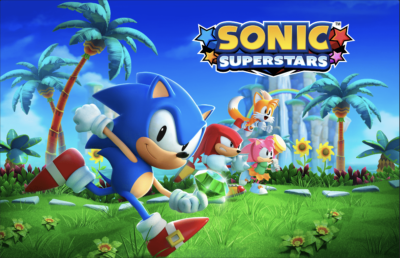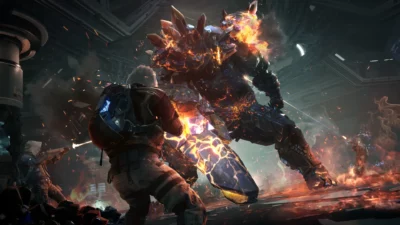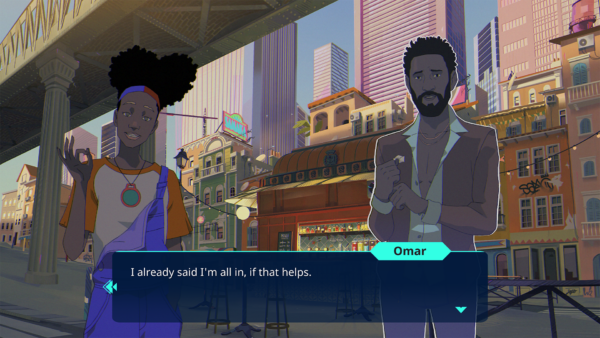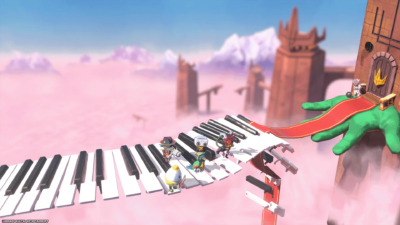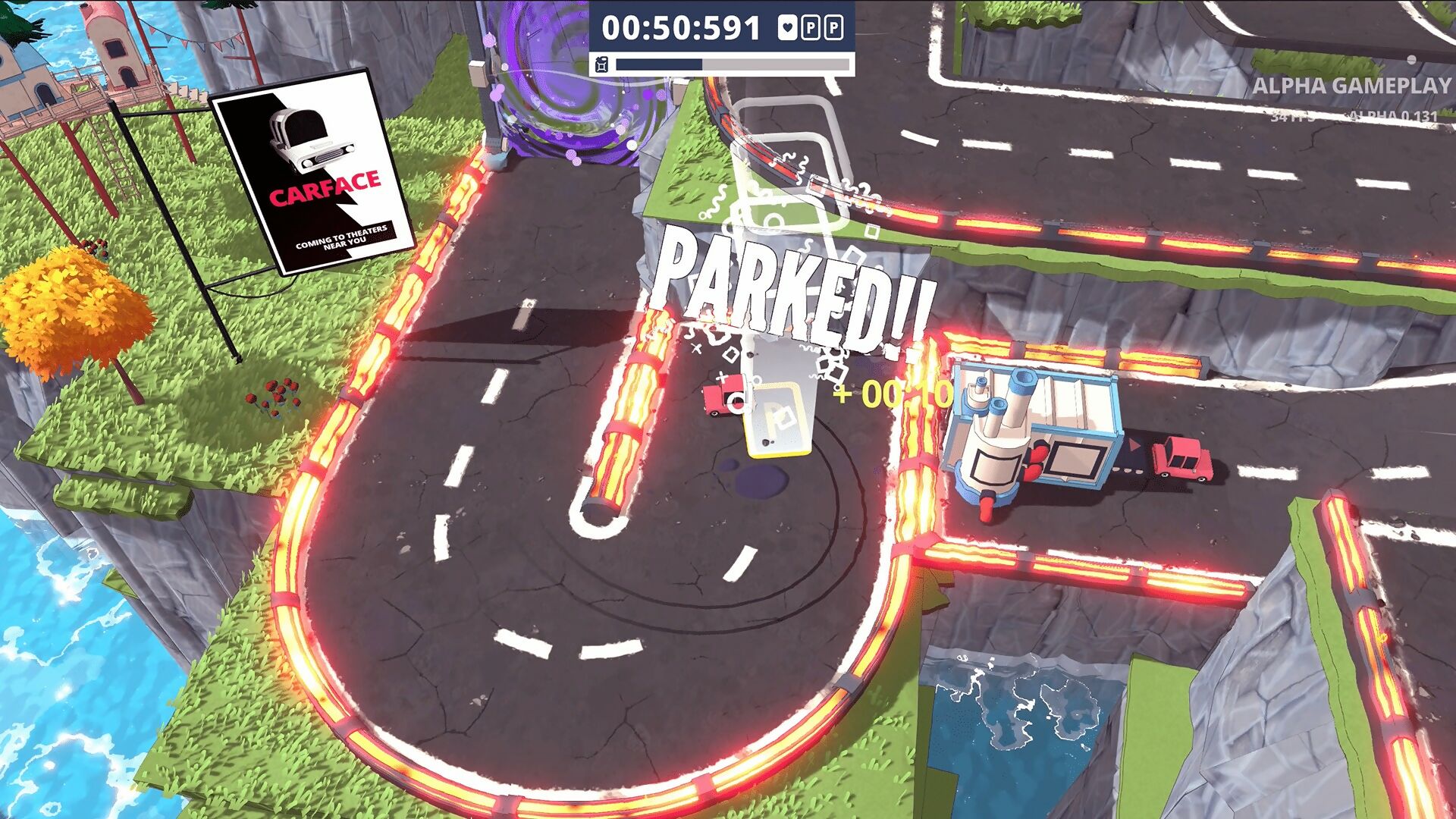
We get the crash course on what it takes to make in-game parking a blast with friends in You Suck At Parking.
When Belgian studio Happy Volcano set up its stand at London’s EGX in September 2021, there must have been at least a hint of apprehension in the air. With the world only just emerging from the pandemic, it was the first time Happy Volcano’s work-in-progress, You Suck at Parking, had appeared in public. The team may have enjoyed the process of building the arcade racer up from a quick, physics-based prototype, but how would British gamers take to it?
Fortunately, as players eagerly gathered around the pair of laptops running the game, designer and studio co-founder David Prinsmel realised that he and his team were on the right track. “We constantly had ten people around the booth,” Prinsmel recalls. “People were waiting to play the game. After two hours, we already had hardcore fans who’d just come by each day, multiple times a day, just to check the leaderboards and see [whether they could] shave a few seconds off their best times. We felt like, ‘OK, we have something good here’. We came out of our cave, showed it to the crowd, and they liked it.”
Having got our hands on You Suck at Parking for ourselves, we can see why the game caused a stir. Unlike most arcade racers, the goal isn’t simply to beat your opponents to the finish line; as the title implies, you’re asked to guide your tiny vehicle around a twisty, hazard-laden track and bring it to a halt on one of several parking spaces. Get one car parked, and you’ll start again at the beginning with a fresh car; you get points for every car you successfully park in a space, and the player with the most points wins the round. With races quickly devolving into shouts and gasps of horror, as opponents knock each other off the track or succumb to one of the deadly hazards you’ll find dotted around the place, You Suck at Parking feels so natural as a competitive game that it’s hard to believe it was originally programmed as a single-player experience.

In single-player or multiplayer, there’s a certain satisfaction to skidding around a bend and stopping precisely in a parking space.
For You Suck at Parking’s multiplayer mode, we have Games Workshop legend Ian Livingstone to thank. When his investment firm, Hiro Capital, agreed to back Happy Volcano and its arcade racer in February 2021, it was on the condition that it be reworked into a bigger, online multiplayer game. That cash injection – an investment worth $2.2 million – helped Happy Volcano grow and make a far more ambitious racer, but it also meant completely overhauling the physics engine to cope with eight remote players all hurtling around the same track. As you’re about to discover, this was no easy task.
To tell us how You Suck at Parking emerged as a fun antidote to the studio’s previous game, the thematically weighty puzzler The Almost Gone, and why it has as much in common with crazy golf as racing, here’s David Prinsmel and fellow co-founder (and managing director) Jeroen Janssen with the full story.
How much has the game changed since the project began – was it an iterative process, getting it to where it is now?
David Prinsmel: Yeah, definitely. Our previous game, The Almost Gone, was a real struggle in terms of finding the mental power to finish it. It was a heavily story-based game with a very difficult subject. The studio was in desperate need of something light-hearted, and just a change of mental state, I think. We were playing a lot of What The Golf and Untitled Goose Game – some really great indie games. I thought, ‘We should do something with little cars’. I thought of Micro Machines, and just having fun building a prototype. So we set a brief that basically said, ‘Build a little car that drives on a funny little track, and let’s see what we can do’.
Soon after that, we had the idea of not just racing but stopping in different areas with your car. And you didn’t have just one car – you could litter the track with your cars. The idea of You Suck at Parking was born.
The thing we found pretty fast was that our approach was more like a golf game than a racing game. An area will have obstacles, but the goal is to clear the level, not to race to an endpoint and get a time. We built a prototype and found out that it was fun straight away. So we had something really simple, and over a couple of days we kept iterating on it, and just following the fun in the design. There wasn’t really a big plan laid out. That’s basically a studio’s or game designer’s dream: you find a mechanic that’s fun to play, and then you can build on top of that and make the game more interesting, give it more depth without making it too complex.

There are over 100 single-player courses in You Suck at Parking, some of them almost maze-like in their complexity.
What’s interesting is that in the first prototype, your car stayed on the track. We even have an old demo that still does this: you get this mayhem of previous wreckages or cars that you parked in the wrong spot. So you’d actually make it harder for yourself when you were struggling with the track. It was to look at and was a fun gimmick, but eventually it didn’t serve the player experience; we were actually punishing players that were struggling instead of making it gradually easier for them if they played longer. So we decided to kill that mechanic and just have you pick your car and customise it. It also gave us options of having a car customiser and having items you can unlock for your car and cosmetics, so you could build your own setup.
Basically, the idea’s still the same: you drive a car, if it doesn’t work out for you, grab a new one. The threshold to get into a game is really low. That’s what makes it so strong: it’s instant, there’s no delay, there’s no waiting, there’s no thinking – it’s just pure fun.
One of the mechanics I like is where you can crash your car, but it still rolls on, so you can still score points if your wreck lands in a space. Was that a bit of serendipity, or was that actually designed in?
DP: That’s actually funny because I think it was the playtesters or people playing the demo who figured it out. ‘Hey, I don’t need to drive my car to actually [score]’. Because we had leaderboards, everyone was competing for the fastest time, and obviously you win a lot of time by just letting your car gently roll into a parking spot while you start driving the next one.
So it was like, ‘Oh, this is [flipping] . Let’s just keep this in and even use it in certain levels’. You learn the mechanic, and if you really want to get good, then there’s this other level [of skill] where you shave off hundredths or thousandths of a second on a specific track by finding shortcuts, and by basically getting the feeling you’re breaking the game or outsmarting the designer. When actually we just left it in there so you can figure out for yourself how you want to finish the track.
So, in terms of the car physics and how they handle, how much work has gone into that? It must be quite a difficult, fine line to strike, between physics that feel fun and arcadey, but aren’t so floaty and skittish that they’re frustrating.
DP: Well, that’s a bit of a long story. We knew that the game was simple, so the driving had to feel great. It just had to be spot on. But in terms of getting there, it was a struggle, because we kept on improving the driving mechanics and the feel of driving the car. Eventually, we had a very good driving mechanic and we built all the single-player levels. So we tested them all, we had 100 levels ready, and then – funny story – we got an investor that really wanted us to make a multiplayer game.

Courses are regularly packed with hazards, ranging from magnets to fans to deadly cannons.
So, we took the investment on the terms of making a multiplayer game as well. Meaning that the Unity physics we were using were really bad at being deterministic for all players in the lobby. What would happen is, my screen wouldn’t show the exact same thing as what was happening on your screen. Unity’s physics couldn’t handle that, so we came to the tough conclusion that we had to rebuild the whole physics engine in Quantum physics.
[Created by Photon, Quantum is an engine specifically built to provide accurate physics simulations for multiplayer Unity games – Ed.]
So we just spent eight months or something completely rebuilding the game to get to the same point as we were at before, just so we could make the multiplayer version of the game. It’s a touchy subject to say the least!
Oh my god.
DP: Yeah, it was a stressy time for us.
Jeroen Janssen: We always wanted to do [single-player], but there was no money to do it. So we started out with single-player, hoping the game would sell well enough for us to bring a multiplayer mode later. But yeah, then [investor] Ian Livingstone got involved, and that’s why we’re here now.
DP: The plan was that we were gonna release packs of levels, like What the Golf, and be a single-player game. That was the initial idea, but then it became something completely different.
Is it easier now for a smaller team to make a multiplayer game because of things like Unity and physics engines like Quantum?
JJ: I guess that’s more of a technical question. The problem with Unity is that during our development, they were balancing between two different multiplayer engines. One which would have suited our needs but wasn’t ready for production yet, and we needed to be ready for production. Then the other choice for us was to work with an external engine, Photon’s Quantum, which is deterministic and has all that stuff we needed. We made a choice to do that. Like David said, it took us a little while to rebuild the whole game into it.
DP: When we had the Unity physics and were porting it to Quantum’s physics, we had two windows open on one desktop. And one of our devs did a really good [trick] of completely mimicking the previous physics with different code and different systems. You could drive two cars at the same time – they were kind of ghost cars, one with Unity physics and the other with Quantum physics, and you could see the ghosts overlapping.

Happy Volcano got its start with mobile app Lava Fever, and heartfelt puzzler The Almost Gone.
In the beginning, they weren’t really in sync, but at the end, they were almost behaving the same way. So we knew, ‘OK, it’s taking the jumps as far as previously. It’s taking the speed boost the same, it’s landing the same. So we know that most of the levels will probably work’.
That was a relief. We didn’t have to create 100 new levels. And then yeah, in the meantime we started working on the multiplayer maps, which was also trial and error and serendipity, because we were working on them but didn’t have the multiplayer lobbies and stuff running yet. So it was a bit of guesswork there. It’s been – how long since – a year and a half?
Since then, we’ve started making the multiplayer levels, and we’ve learned so much. We came from having really elaborate maps, really far, and long, and crazy, and it looked really good. But once you start playing it, you don’t meet other players. There’s not a lot of interactivity. So we had a couple of design rules that helped us make the ideal multiplayer map: it should be compact, so you meet each other all the time. We also figured out that we needed to make the levels in multiplayer a bit easier, because in single-player, the star of the game is the track – you need to master the track and get to know the route and the corners. But in multiplayer, you have other players messing with you as well. So we made the tracks easier because there’s this extra component where players try to be faster than you, and you bump into each other or make the track harder to navigate.

With eight players all vying for the same parking spots, races often devolve into glorious chaos.
In terms of the elements on the tracks, you’ve got cannons, magnets, half-pipes… What was your process for coming up with all those ideas?
DP: We had the team spread out ideas and we reviewed them, made a shortlist and started prototyping the top five ones. What was really fun was when we discovered we didn’t need that many obstacles because even if you have five, it’s a physics game. It’s about the way you combine them, make them act differently, or the player can interact with them differently. So some obstacles you could also use as a means of making a shortcut. For example, you have the fan which will blow you off the track if you’re not careful, but you could also use it to push you back onto the track. What’s interesting is that all these obstacles work in tandem. If you place them in a smart way, there’s endless possibilities, so you can build a track with just two road pieces and have the rest as fans and magnets.
What’s left to do on the game, and do you have post-launch plans or a roadmap for the future of You Suck at Parking?
JJ: At the moment, it’s getting through certification. That’s the most important thing: getting all the bugs fixed. Then we have a day one patch with some stuff in it. And there’s a plan for at least a year and a half on the updates – it’s too early to share that because first we want to take the time to get to know our players, see what they like and don’t like about the game, and then reshape that plan to what they expect from us and not what we think they need. But the idea is to keep it alive for a long time.
DP: There’s definitely a roadmap for the future. We have a schedule where we’ll release big things every three months, and we have a schedule that will release content in two-week periods of time, and we have a different schedule that will bring something new every day.
So, those things will definitely be in the game, but [it depends] if the community will be more of a competitive type of player or a more exploration or challenge type of player. That will define what stuff we will bring to the game. We’ll listen to what people like the most about the game and play into that, and just keep building on top of it


